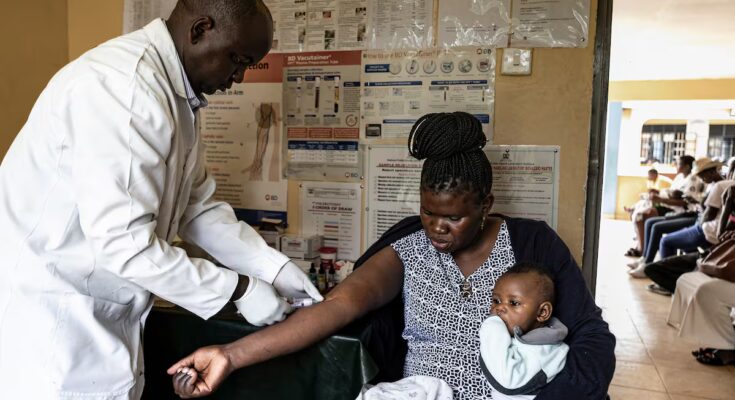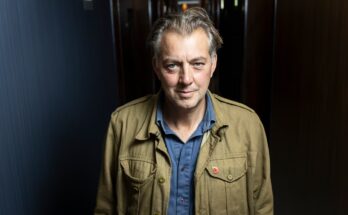Over the past two decades, the world has witnessed extraordinary progress in global health: tens of millions of lives have been saved, mortality has fallen dramatically, and life expectancy has increased dramatically even in the poorest countries.
However, the context has changed. Donors are cutting their aid budgets. The implementing countries want to take the lead. Communities are asking for more prominence. The model responsible for so many successes will not be the one that allows us to continue moving forward.
To adapt to this new reality, we must transform the global health ecosystem to be more efficient and innovative, more responsive to countries’ needs, and more integrated.
The Global Fund partnership was created just over 20 years ago to fill a glaring gap in the system. By combining government capacity with community passion, civil society outreach and private sector pragmatism, this unique public-private partnership has proven remarkably effective, saving 70 million lives and reducing the combined mortality rate from AIDS, tuberculosis and malaria by 63%.
Now is the time to reinvent ourselves once again: get the most out of every dollar, support countries on their path to self-sufficiency, and contribute to the overall transformation of the global healthcare ecosystem.
Maximize the impact of every dollar
Maximizing the impact of every dollar means ensuring quick, affordable access to life-saving innovations. This is exactly what we are doing with lenacapavir, a new 100% effective and long-acting injectable tool for preventing HIV. For the first time in history, a new HIV prevention drug is being used simultaneously in low- and middle-income countries and in high-income countries. The first deliveries will arrive in Africa this month. A generic version will soon follow suit, further reducing costs.
We’ve taken the same approach with the latest generation mosquito nets to fight malaria, which are 45% more effective than traditional ones and cost just 70 cents more, as well as with AI-assisted digital x-rays, which facilitate advanced tuberculosis screening in some of the most complex and remote environments.
By working together with our partners we can move even faster. When we talk about life-saving innovations, time translates into lives. Scale translates into impact. We can’t afford to spend years piloting programs or slowly rolling out products.
But innovations improve health outcomes only if they reach those who need them most. Lack of affordability, weak healthcare systems, stigma and discrimination remain relentless obstacles. Overcoming them is not just a question of health equity and human rights, it is an epidemiological and economic imperative. If innovations don’t reach those most at risk, we lose impact and waste resources.
Maximizing the impact of every dollar also means dismantling silos of disease and specific healthcare products. A more integrated, people-centred approach, which addresses infectious diseases alongside other non-communicable diseases and mental health, can achieve better results and save money, if implemented correctly. Integrating capabilities to address multiple pathogens into disease-specific interventions also strengthens our first lines of defense against new health threats. These changes have big implications for the Global Fund. We must work with our partners to redefine program design and development without diverting attention from outcomes across the three diseases.
Maximizing the impact of every dollar means ensuring quick, affordable access to life-saving innovations. This is what we are doing with lenacapavir, an injectable antiviral to prevent HIV
It is also essential to continue improving efficiency. With an operating expenditure of just 6% of donor funds, the Global Fund is already highly efficient. However, technology, including artificial intelligence, allows us to continue to simplify and automate processes, thereby reducing costs by a further 20%, easing the burden on partner countries.
Accelerate the path to self-sufficiency
Drastic cuts in external financing highlight the urgent need for countries to accelerate their path to self-sufficiency. However, this is a journey, not an immediate change. Too abrupt a transition can reverse progress and cost millions of lives. Preparation for the transition varies greatly from country to country.
The Global Fund will work with countries to accelerate the path to self-sufficiency through support, incentives and, ultimately, the elimination of problems.
This is why we have reformed transition planning and co-financing. We will agree transition periods with some countries so that this three-year subsidy cycle will be the last. For others, the path to transition may take two cycles. In all but the poorest and conflict-affected countries, we will work with governments to develop robust transition plans.
To support the transition, we are stepping up our support for countries to strengthen their public financial management systems and explore new sources of financing. We have already carried out 14 Debt2Health exchanges (debt cancellation in exchange for the country’s investment in health programs) and 14 mixed financing operations. In several countries we directly finance the development of national health insurance plans.
We can also help countries maintain access to affordable, quality-assured medicines by allowing them to use our joint procurement mechanism with their own money. Countries in transition often pay higher prices and incur significant transition costs, even if they can avoid them by using our global digital procurement platform. By offering advance financing and the ability to work with regional procurement platforms, we provide you with more options.
For the first time in history, a new HIV prevention drug is being used in low- and middle-income countries and high-income countries. The first deliveries will arrive in Africa this month
Of course, in some countries, the combination of economic hardship, conflict and weak governance, combined with the scale of the disease burden, make the transition to self-sufficiency a long-term prospect. Now, even in these contexts, we need to focus more on sustainability and help build systems and capabilities that lay the foundations for the future.
Health development assistance remains essential to defeat the world’s deadliest diseases, support countries on their path to self-sufficiency, and strengthen global health security. Countries that have benefited most from globalization also have a responsibility to invest in global public goods such as health, not only as an act of generosity, but also in their own self-interest. However, we need to be smarter about combining subsidies, national fiscal resources, and private capital to create pathways to self-sufficiency.
Transforming the global healthcare ecosystem
The Global Fund was born as a turning point with the belief that established methods were too slow, bureaucratic and far from the front line. That same innovative energy is what should drive us now.
Faced with the need to adapt to new realities, the Global Fund is committed to making big changes: reducing our costs, simplifying our operations and better responding to countries’ needs. We also know that the global healthcare ecosystem needs to transform as a whole and that we have a role to play to make this happen.
Despite all the progress, global health has become too complex and fragmented, and duplication and bureaucracy create challenges for countries and undermine their impact. We must streamline the architecture, merge or close agencies where appropriate, clarify functions and change how we work together and with countries.
The Global Fund, as the largest multilateral funder of global health for both three diseases and for health systems overall, has resources that could be leveraged on a larger scale, such as our ability to influence the market, our global procurement platform, or the unique role we play in strengthening community health systems. However, how the Global Fund’s mandate and priorities evolve should not be defined in isolation, but as part of an overall vision for the future of the global health ecosystem, which also includes WHO, Gavi, disease-specific agencies such as UNAIDS, product development associations such as Unitaid and CEPI (Coalition for Epidemic Preparedness Innovations), and the World Bank and other multilateral development banks with which we collaborate.
We must strengthen our multilateral system, but only if we are prepared to make difficult decisions. Because resource constraints are inevitable, we must be rigorous in determining where external funding brings the most value and how best to allocate functions among different agencies based on their comparative advantages. And how we do it matters. Global health transformation cannot be dictated from Geneva or New York, but rather we must reflect the leadership of countries and communities, as well as regional bodies such as the African Union.
From being a game changer to reinventing yourself
Global health progress over the past two decades demonstrates what the world can achieve when we come together. At a time when skepticism, nationalism and more transactional approaches dominate the narrative, the facts – tens of millions of lives saved, dramatic drops in mortality, drastic increases in life expectancy and enormous economic benefits – remind us that with big ideas and collaboration we can achieve extraordinary results.
However, the model that has worked so far needs to evolve. The progress of the last 20 years represents one of humanity’s greatest achievements in the field of public health. The next twenty years will test whether we can reinvent the system as boldly as we did when we created it.
The decision is not easy: reinvent yourself or die. We must adapt to new realities with courage, protecting what made success possible, but without clinging to the past. Above all, we must continue to pursue our goals: saving lives, ridding the world of the world’s deadliest infectious diseases, and building health systems that care for and protect us all. When humanity unites, no challenge is impossible.



